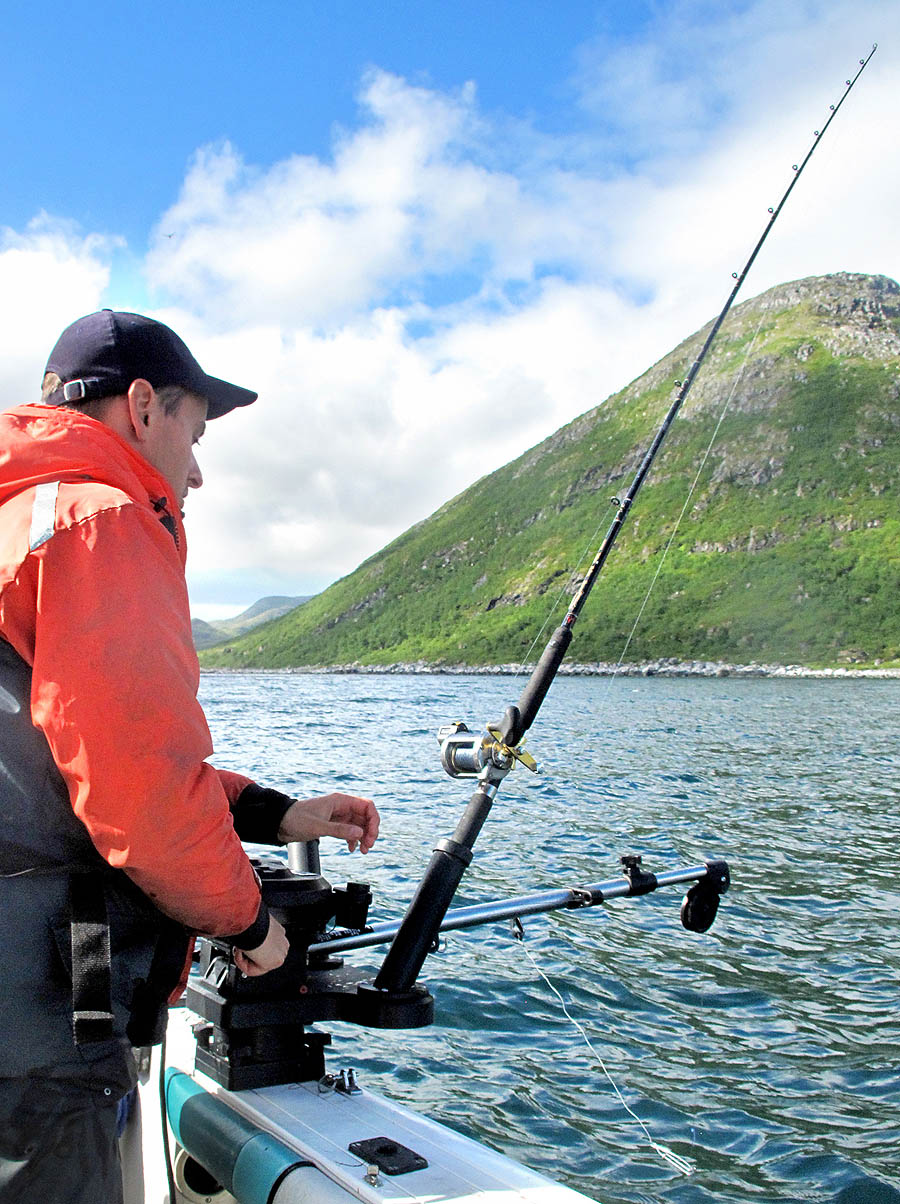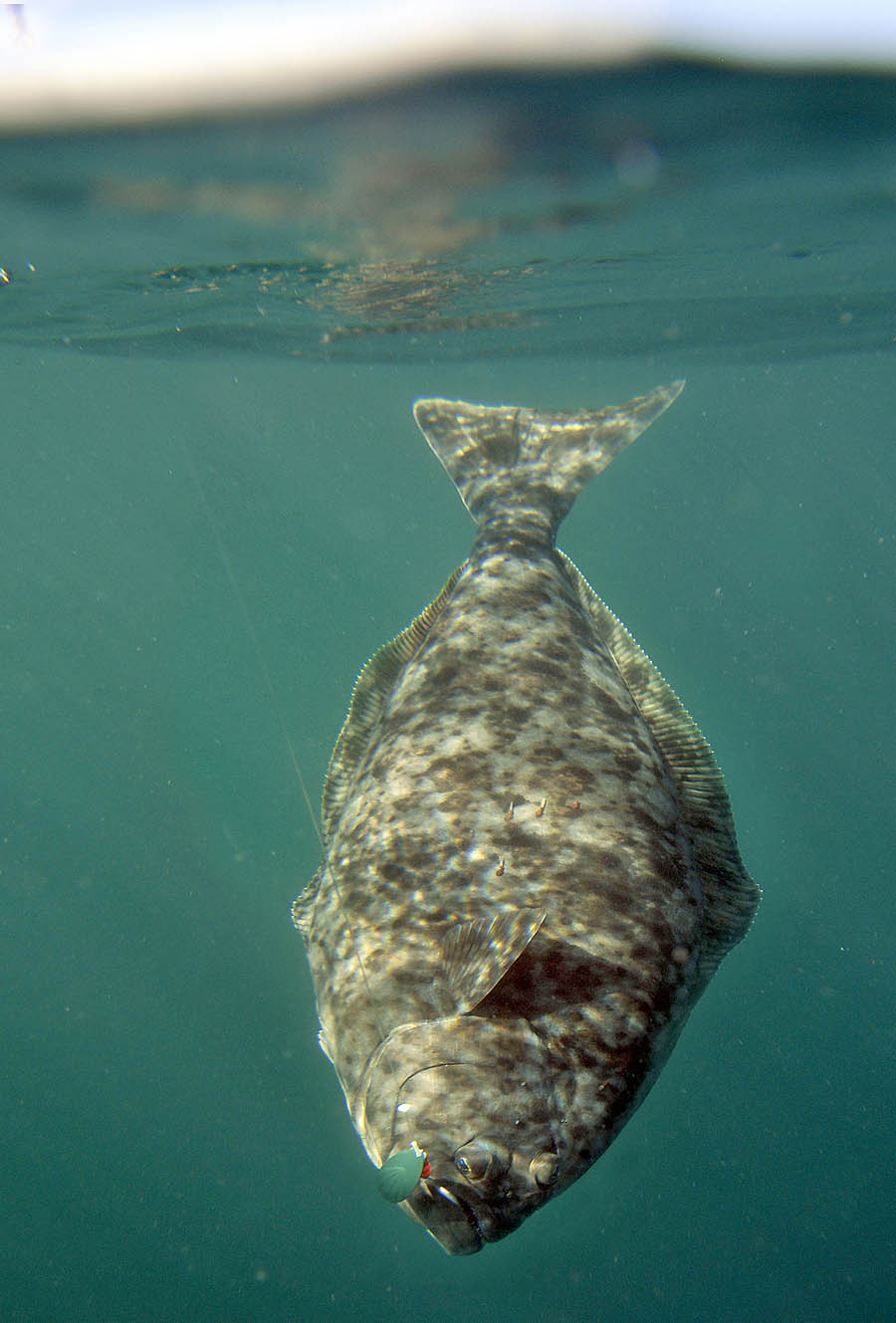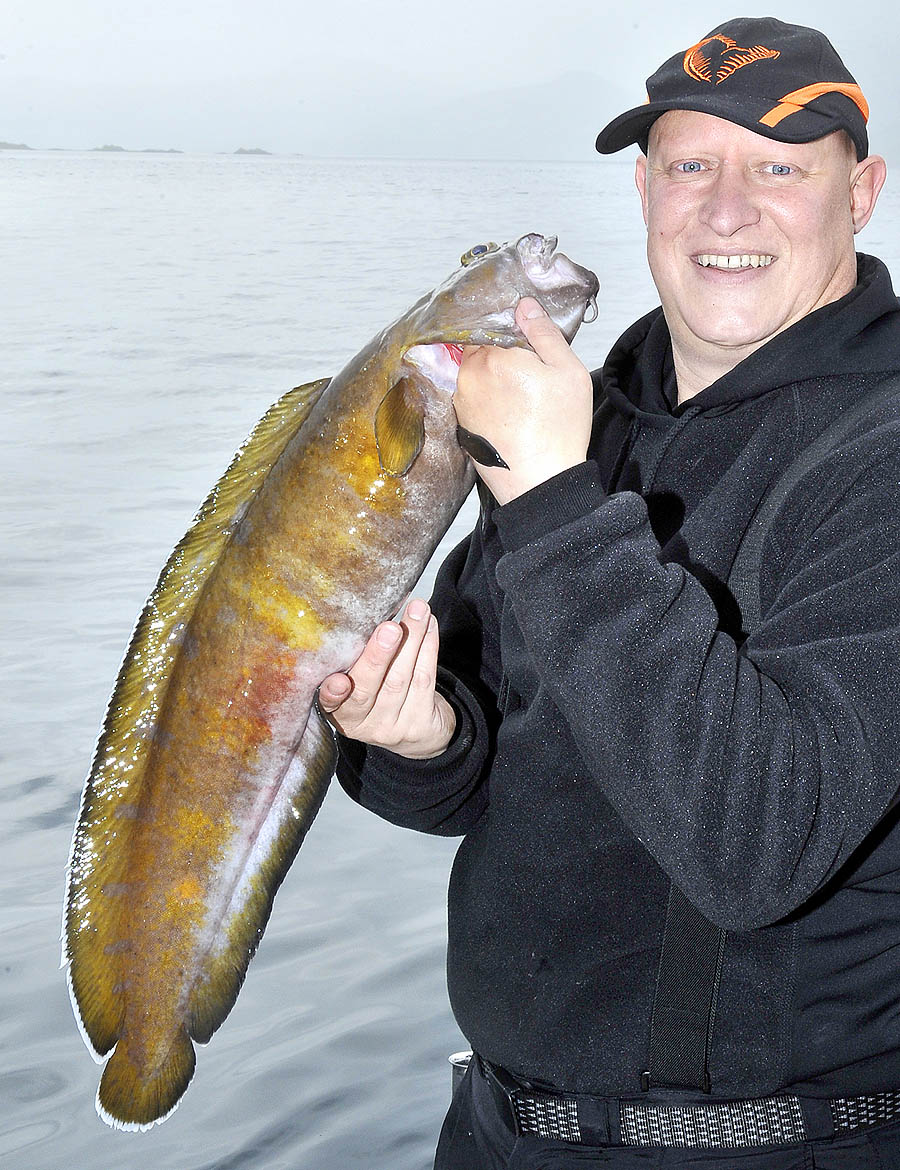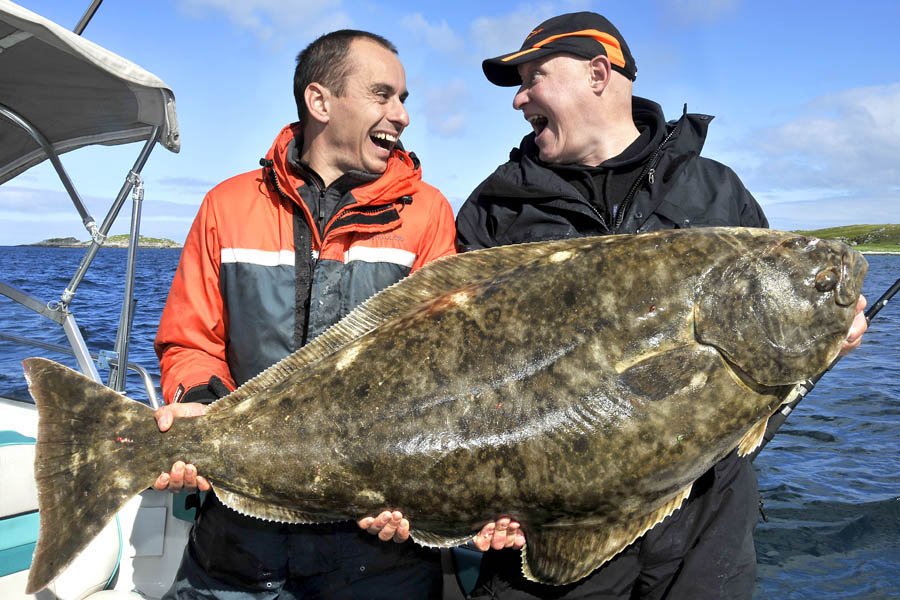 (2010) Traditionally Norway has been known for its salmon fishing, which has unfortunately declined considerably over the last decades. On the other hand, saltwater fishing in Norway has really taken off, and today you can experience world-class fishing for cod, pollock and the gargantuan halibut, which I have long wanted to catch. When I finally got the chance, it was a real eye-opener, and a profound experience to catch this flat sea monster in crystal clear water.
(2010) Traditionally Norway has been known for its salmon fishing, which has unfortunately declined considerably over the last decades. On the other hand, saltwater fishing in Norway has really taken off, and today you can experience world-class fishing for cod, pollock and the gargantuan halibut, which I have long wanted to catch. When I finally got the chance, it was a real eye-opener, and a profound experience to catch this flat sea monster in crystal clear water.
Kick-start
When my good Danish friend, Søren Beck, broke the halibut world record in 2008 with a fish of 202 kilos, it was like a wake-up call for many anglers. Previously the big halibut were mostly caught by fluke, but now it is a completely different story. As with many other types of fishing in big water masses, you have to work out strategic techniques to overcome the enormous areas. If you don't have local knowledge, you are seriously dependent on fish finders, not so much to "see" the target fish, but to find bait fish, and map out the bottom topography. Many Scandinavian specimen anglers have now got their eyes the big halibut potential, and they are doing a bloody good job of indentifying where and how to catch these incredible monster flounders.
I thought, like many other anglers, that the halibut was just another flounder, only bigger, and that bait presentation would be basically the same - and how wrong I was!
The halibut is not just a fat and lazy, bottom-dwelling scavenger - it is a fiercely aggressive predator, hunting in all water layers, even in shallow water, where you would never think to search for them ...
A halibut adventure
After Søren's success I started to look around for chances to try it myself, and in the summer 2010 it happened - together with a band of Danish boatfishing enthusiasts, who transported their own boats the 2.500 kilometres from Copenhagen in Denmark to Vannøya in Northern Norway, well above the arctic circle.
My friend, Thomas, and I flew to Tromsø, hired a car and drove to Vannøya, where the boys had hired a big cabin, with room for 14 happy anglers. They had brought all the food and drinks necessary for the coming two weeks of fishing - so even if we didn't catch anything we could have one helluva party.
However, we did catch - and we did very well - both party and catch!
The day always started with catching baitfish, which were pollock in small size of about 100 to 300 grams. This we could do a couple of hundred meters out from the harbour, at the nearest rocky point and very close to land. Here the bottom falls away steeply, and the little pollock congregate there in large numbers - so after about half an hour we would have enough live- and dead bait for the day. We also caught a few cod and other species, and the boys had even caught big halibut there, so close!
 One of my illusions were that big halibut live on deep water - they do, but definitely not always, which a Norwegian angler found out, when he caught a near 200 kilo fish on only 5 meters of water.
One of my illusions were that big halibut live on deep water - they do, but definitely not always, which a Norwegian angler found out, when he caught a near 200 kilo fish on only 5 meters of water.
Another illusion was, that they stay near the bottom and live as scavengers. Well, when you consider the size of the fish, you realise that they need to consume a fair big amount of protein to sustain their weight, which again means they have to hunt a lot of fish - and they certainly do! This dictates a different approach to bait presentation; instead of fishing baits on the bottom, it is much more effective to fish about 2 meters off the bottom, and even in the free water masses. We usually fished over water, which was 8 to 20 meters deep, and tried to keep the baits between 1 and 3 meters from the bottom.
I am sure, that if you find a group of halibut you can catch them on the bottom itself, but it is so much more effective to fish higher in the water, and so much more fun.
Our tactic was to stay in an area, where we had a halibut bite - of course, for obvious reasons, you want to catch the one that attacked the bait, but also because they seem to stay together in small groups. We fished for them both by trolling and by jigging. For trolling we had by far the best success with a herring size dead or live fish on a spinner-blade rig, or a whole live pollock on a jig-head, specifically designed for this kind of fishing. For jigging all sorts of big jigs would probably do, but we had very good results with Prologic's "Herring Cut-Bait" jigs.
Catch-and-release is strongly advised, both to preserve the big halibut population, but also because big halibut, over 30 kilos, build up a lot of heavy metals and PCB, which is obviously not very healthy to consume.
In the two weeks at Vannøya, we could fish 9 days, because of the weather. This was in July, and we regularly had snow warning, besides storm and rain. Definitely not your average summer holiday resort ...
Never the less, we caught 85 halibut, with the biggest of 86 kilos.
Side catches
Maybe it is a bit cheeky to call the other fish species "side catches", because they are themselves awesome fish target and catch. For example the huge cod of 20 to 30 kilos, which can be caught in northern Norway in big numbers.
Outside the archipelago, where we normally fish because of the weather, there is a plateau about an hours boat drive away. Here big cod and redfish congregate, and can easily be caught, providing the weather is stabile enough.
 Inside the archipelago we catch other species such as tusk, which are ferocious, burbot looking cod-fish that can grow to 30 kilos. Many anglers don't like them, because they are usually caught, while fishing for halibut or cod, but they honestly are good fun to catch.
Inside the archipelago we catch other species such as tusk, which are ferocious, burbot looking cod-fish that can grow to 30 kilos. Many anglers don't like them, because they are usually caught, while fishing for halibut or cod, but they honestly are good fun to catch.
The other fish family, which has great attraction on anglers is wolffish. There two species in northern Norway, the common Atlantic or striped/grey wolffish, and the spotted wolffish. Both species grow to well over 20 kilos, and the current spotted wolffish record of 27,9 kilo is actually from Vannøya, where we fished.
Besides the fishing we enjoyed watching the white-tailed eagle hunt fish near our boat; they even took dead fish we had thrown in the water. Nearly every day we saw whales and seals, and we had a huge finback whale topping only a few meters from boat.
The Atlantic Halibut
The Atlantic halibut, Hippoglossus hippoglossus, is a flatfish, or flounder. They live on or near sand, gravel or clay bottoms at depths of between 5 and 2.000 meters. The halibut is among the largest bony fish in the world. Halibut are strong swimmers and are able to migrate long distances. Halibut size is not age-specific, but rather tends to follow a cycle related to halibut (and therefore food) abundance.
The native habitat of the Atlantic halibut is the temperate waters of the northern Atlantic, from Labrador in Canada and Greenland to Iceland, the Barents Sea and as far south as the Bay of Biscay. It is the largest flatfish in the Atlantic and one of the largest species of flatfish in the world, reaching lengths of up to nearly 5 meters and weights of well over 300 kilos. Its lifespan can reach up to about 50 years.
